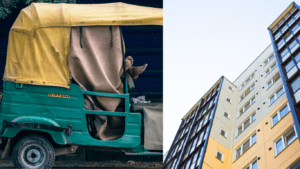Uttar Pradesh, a state known for its rich cultural heritage and historical significance, boasts a diverse array of traditional attire that reflects its vibrant history and cultural evolution. From the grandeur of Mughal-inspired garments to the simplicity of rural wear, the traditional dress of Uttar Pradesh is a fascinating subject that intertwines history, artistry, and regional variations. This comprehensive guide explores the traditional dress of Uttar Pradesh in detail, covering its historical context, regional variations, fabrics, embellishments, and modern adaptations.
Historical Overview of Traditional Dress in Uttar Pradesh
The traditional dress of Uttar Pradesh has evolved through various historical periods, influenced by different rulers and cultural exchanges. The state’s attire reflects its historical richness, including the impact of Mughal rule, British colonial influence, and regional customs.
Mughal Era Influence
During the Mughal era (1526-1857), the traditional dress of Uttar Pradesh experienced significant transformation. The Mughals, known for their opulence and grandeur, introduced luxurious fabrics, intricate embroidery, and elaborate designs. Key garments from this period include:
- Sherwani: A long coat-like garment worn by men, often richly embroidered and made from luxurious fabrics like silk. It is typically paired with a Churidar (tightly fitting trousers) or Shalwar (looser trousers). The Sherwani became a symbol of sophistication and was commonly worn during weddings and formal events.
- Jama: A traditional Mughal garment for men, the Jama is a long robe with a high collar and intricate embroidery. It was often worn over a Churidar or a Shalwar.
- Anarkali Suit: This traditional attire for women features a long, flowy dress with intricate embroidery, often paired with a fitted bodice. Named after the famous courtesan Anarkali, this outfit became a symbol of Mughal elegance.
British Colonial Influence
The British colonial period (1858-1947) brought about changes in traditional dress, introducing Western styles and fabrics. This period saw a blending of traditional Indian attire with British elements, creating hybrid styles:
- Nehru Jacket: Introduced during the colonial era, the Nehru jacket is a sleeveless coat that combines traditional and modern elements. It became popular in both formal and casual settings.
- Western Suits and Trousers: Western-style suits and trousers were adopted by many, especially in urban areas, while still retaining traditional elements in the form of accessories like turbans and kurtas.
Regional Variations in Traditional Dress
Uttar Pradesh is a diverse state with a range of ethnic groups, each contributing to the variety of traditional attire. The traditional dress varies significantly between urban and rural areas, as well as across different regions.
Urban Attire
In urban centers like Lucknow, Kanpur, and Agra, traditional attire often reflects a blend of historical grandeur and modern sophistication.
For Men
- Sherwani: A luxurious garment worn during weddings and formal occasions, often elaborately embroidered and made from rich fabrics like silk or brocade. The Sherwani is paired with a Churidar or a Shalwar and is often complemented by a turban or a hat.
- Kurta-Pajama: A more casual outfit consisting of a long shirt (Kurta) and trousers (Pajama). It is a popular choice for everyday wear and casual events.
- Pathani Suit: A traditional outfit featuring a long tunic (Pathani) and matching trousers. It is known for its comfort and is often worn for special occasions.
For Women
- Saree: A traditional garment consisting of a long piece of fabric draped elegantly around the body. Urban Sarees often feature intricate weaves and embellishments. The Banarasi Saree, known for its luxurious silk and intricate patterns, is a prominent example.
- Lehenga-Choli: This three-piece outfit includes a long skirt (Lehenga), a blouse (Choli), and a dupatta (scarf). It is often worn during festivals and weddings and is known for its elaborate embroidery and vibrant colors.
- Salwar-Kameez: A traditional outfit consisting of a long tunic (Kameez) paired with loose trousers (Salwar) and a dupatta. This outfit is versatile and suitable for various occasions.
Rural Attire
In rural areas of Uttar Pradesh, traditional dress tends to be more practical and suited to the local climate and lifestyle.
For Men
- Dhoti-Kurta: The Dhoti is a traditional cloth wrapped around the waist and tied in place, while the Kurta is a simple, loose-fitting shirt. This attire is common in rural areas and is ideal for daily chores and farming activities.
- Lungi: Similar to the Dhoti, the Lungi is a piece of cloth tied around the waist. It is often worn in more casual settings and is comfortable in hot weather.
For Women
- Salwar-Kameez: In rural areas, the Salwar-Kameez is popular due to its comfort and practicality. The fabric used is typically lighter, and the design is simpler compared to urban variations.
- Ghagra-Choli: A traditional outfit featuring a long skirt (Ghagra) and a blouse (Choli), often paired with a dupatta. This attire is commonly worn during festivals and special occasions.
Fabrics Used in Traditional Dress
The fabrics used in traditional attire play a crucial role in defining its style and comfort. Uttar Pradesh is known for its rich textile heritage, with various fabrics being used in traditional garments.
Silk
Silk is one of the most luxurious fabrics used in traditional attire. It is known for its sheen, softness, and drape. Some notable silk fabrics from Uttar Pradesh include:
- Banarasi Silk: Originating from Varanasi, this fabric is renowned for its rich texture and intricate gold and silver embroidery. Banarasi Silk Sarees are highly prized and often worn during weddings and special occasions.
- Katan Silk: A type of silk woven from fine silk threads, Katan Silk is used in high-quality Sarees and other traditional garments.
Cotton
Cotton is a versatile and breathable fabric widely used in traditional attire, especially in rural areas. It is known for its comfort and suitability for hot climates. Common cotton garments include:
- Salwar-Kameez: Made from lightweight cotton fabric, this outfit is ideal for everyday wear and offers comfort in warm weather.
- Kurta-Pajama: Often made from cotton, this outfit is popular for casual and semi-formal occasions.
Wool
Wool is used in the cooler regions of Uttar Pradesh to provide warmth. Traditional woolen garments often feature hand-knitted designs and patterns:
- Kullu Shawls: These woolen shawls are known for their intricate patterns and warmth. They are commonly worn during the colder months.
- Woolen Kurtas: In some regions, woolen Kurtas are worn during winter to provide extra warmth.
Embellishments and Craftsmanship
Traditional attire from Uttar Pradesh often features intricate embellishments and craftsmanship, reflecting the region’s artistic heritage.
Embroidery
- Chikan Embroidery: Originating from Lucknow, Chikan embroidery is known for its delicate and intricate needlework. It is often used on Sarees, Kurtas, and Dupattas and involves techniques like Zardozi (gold thread embroidery), Kamdani (mirror work), and Murri (raised stitches).
- Kashida Work: This type of embroidery is popular in the western parts of Uttar Pradesh and involves intricate threadwork to create beautiful patterns and designs.
Mirror Work
Mirror work, or “Shisha” embroidery, involves sewing small mirrors onto the fabric to create a shimmering effect. This type of embellishment is commonly used in rural attire and festive garments.
Block Printing
Block printing is a traditional technique used to create patterns and designs on fabric. It involves stamping designs onto the fabric using wooden blocks. This technique is often used in rural areas to create vibrant and unique textiles.
Modern Adaptations and Fusion Fashion
Traditional attire from Uttar Pradesh has evolved over time, incorporating modern trends and creating fusion fashion that blends traditional elements with contemporary styles.
Designer Sarees
Modern designer Sarees often feature innovative cuts, fabrics, and embellishments. These Sarees are designed to cater to contemporary tastes while preserving traditional aesthetics. Designer Sarees may include features like pre-stitched drapes, experimental fabrics, and contemporary embroidery.
Fusion Wear
Fusion wear combines traditional garments with modern elements to create unique and stylish outfits. Examples include:
- Kurta with Jeans: Pairing a traditional Kurta with jeans creates a casual yet elegant look suitable for various occasions.
- Saree Gowns: A modern adaptation of the traditional Saree, Saree gowns feature the drape of a Saree combined with the structure of a gown, offering a contemporary twist on traditional attire.
Festive and Wedding Wear
Traditional attire continues to be popular for festive and wedding occasions. Modern designers often incorporate traditional elements into contemporary designs, creating outfits that are both stylish and culturally significant. Examples include:
- Lehenga-Choli Sets: Modern Lehenga-Choli sets often feature intricate embroidery, vibrant colors, and contemporary silhouettes, making them suitable for weddings and festive celebrations.
- Sherwani with Modern Cuts: Sherwanis are often updated with modern cuts, fabrics, and embellishments to create a blend of traditional and contemporary styles.
Conclusion
The traditional dress of Uttar Pradesh is a rich and diverse tapestry that reflects the state’s historical, cultural, and regional variations. From the opulent Mughal-inspired garments to the practical rural attire, each piece of clothing tells a story of artistry, craftsmanship, and tradition. Understanding and appreciating these traditional garments provides valuable insights into the cultural heritage of Uttar Pradesh.
FAQs
What is the traditional dress of Uttar Pradesh?
The traditional dress of Uttar Pradesh includes a variety of garments such as the Sherwani, Kurta-Pajama, Saree, Lehenga-Choli, and Salwar-Kameez. The attire varies between urban and rural areas, with elaborate garments in cities and simpler, practical outfits in rural regions.
What types of fabrics are commonly used in Uttar Pradesh traditional clothing?
Common fabrics include silk, cotton, and wool. Silk is used for luxurious garments like Banarasi Sarees, cotton for everyday wear like Salwar-Kameez, and wool for winter garments such as Kullu shawls.
What is Chikan embroidery?
Chikan embroidery is a traditional needlework style from Lucknow, known for its delicate and intricate designs. It involves techniques like Zardozi (gold thread embroidery), Kamdani (mirror work), and Murri (raised stitches).
How has the traditional dress of Uttar Pradesh evolved over time?
Traditional dress in Uttar Pradesh has evolved through historical periods, including Mughal and British colonial influences. Modern adaptations include fusion fashion that combines traditional elements with contemporary styles.
What is fusion fashion in the context of Uttar Pradesh traditional attire?
Fusion fashion blends traditional garments with modern elements. Examples include pairing a Kurta with jeans or creating Saree gowns that combine the drape of a Saree with the structure of a gown.
Where can I find authentic Banarasi Silk Sarees?
Authentic Banarasi Silk Sarees are primarily available in Varanasi and other major cities in Uttar Pradesh. They can also be found in specialty stores and online platforms dedicated to traditional Indian textiles.
What are the key features of a Sherwani?
A Sherwani is a long coat-like garment worn by men, often richly embroidered and made from luxurious fabrics like silk. It is typically paired with Churidar or Shalwar and is worn during formal and ceremonial occasions.
What are some traditional accessories worn with Uttar Pradesh attire?
Traditional accessories include turbans, jewelry (such as necklaces and earrings), and dupattas (scarves). Accessories vary depending on the occasion and the specific traditional garment.




